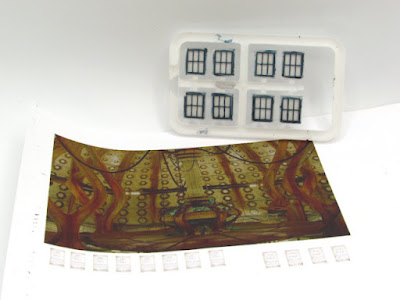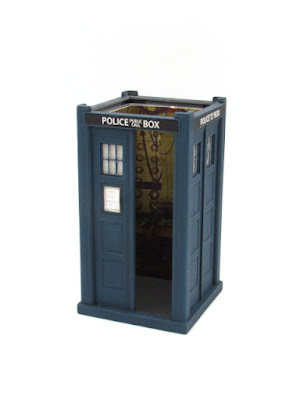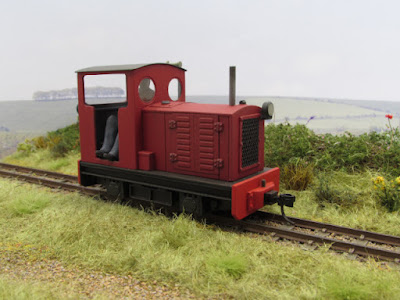Well before I started to plan my TARDIS build I knew that for any Doctor Who diorama to work I would require a figure to represent the Timelord themselves. I therefore approached this before doing anything else, starting with a search of the internet for something suitable and finding that rather oddly, 1/43rd scale Timelords are in short supply... So I decided to take the approach that I usually take in these circumstances and opted for surgery on a cheap Chinese copy of a figure from a well-known German brand.
The pose of this figure reminded me of the many pictures of David Tennant as the tenth Doctor, posed with his hands in pockets, wearing a suit and long coat rather than the three-piece suit of the figure. I therefore schemed to extend his suit jacket into a long coat and alter the waistcoat into a new suit jacket. Extreme tailoring began by drilling holes into the base of the creases of the jacket to allow 0.5mm brass wire to be superglued in place. This in turn supports 10 thou styrene taped over a rolling pin and heated using boiling water. Extra styrene strip support around the joints made for a solid construction.

Once the glue was set I then shaped the 10 thou styrene to create the lower half of the coat, bending the outer brass strips around at the base to help shape the bottom and side edges around his legs. It was at this point that a few nagging doubts crept in about the upper part of the coat and how it sat around his pocketed hands. I therefore slept on it, to look with fresh eyes on return from our holiday...
On my return I still wasn't convinced and started work using an alternative figure and the same coat extension method, but without that hands-in-pockets look. However one evening I took another look at the original figure and set-to with scalpel, files, 5 thou styrene lapels and Milliput to create a layout of the upper coat that actually looked about right. I had always planned to transplant in a different head so that was also completed at this stage.
Now what is an anniversary special without it being a multi-Doctor adventure? The more I looked at the second figure he looked like an old man in a long coat, so with a few tweaks it became a shorter coat and a bit of work around the collar gave me a neck-tie and a reasonable (if you squint) William Hartnell.
Photographing figures in the process of modification is tricky, but the view above shows how I had used Milliput to create the bottom of the jacket on the tenth Doctor figure and to manipulate my styrene lapels towards the neckline. Milliput forms a lot of the texture of the coat extensions, as can be seen on the rear view, and I also added texture and shape to the hair on both figures. If there is one take-away from this whole process it is how much this texture transforms these cheap figures, as the hair is usually their worst aspect, often featuring a injection mark and no detail.
Happy with the figures I tentatively added a coat of grey primer to see how everything blended together, and found the result quite satisfactory. At this stage I had not decided which would figure in the diorama, I was certainly keeping my options open. The closer resemblance of the Peco Police Box to the 2005 prop was eventually the deciding factor to go with the tenth Doctor.
From the back the hair texture becomes more apparent with a coat of paint. The seam on the back of the tenth Doctor's coat was a last minute addition before painting as I had spotted it on a GIF I had posted to a Teams chat at work. Research never ends!
More on the Doctor Who project soon...
Colin


















































